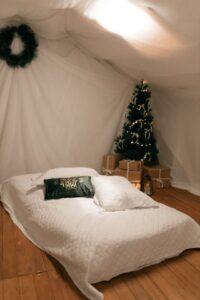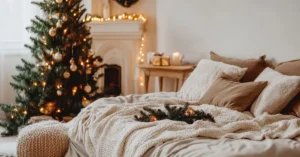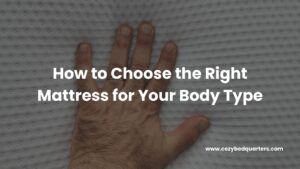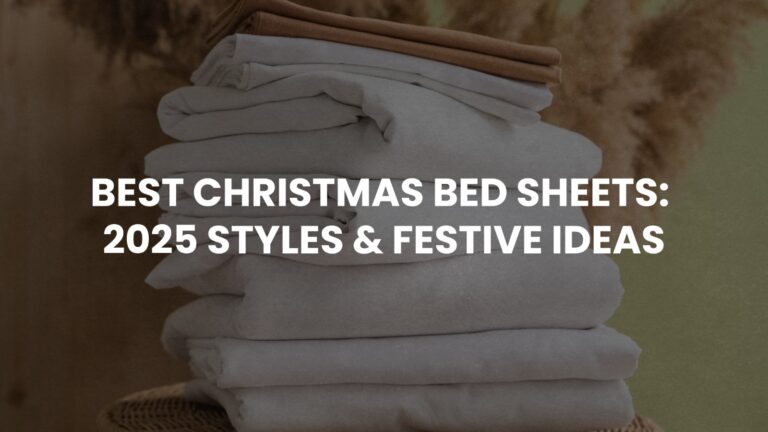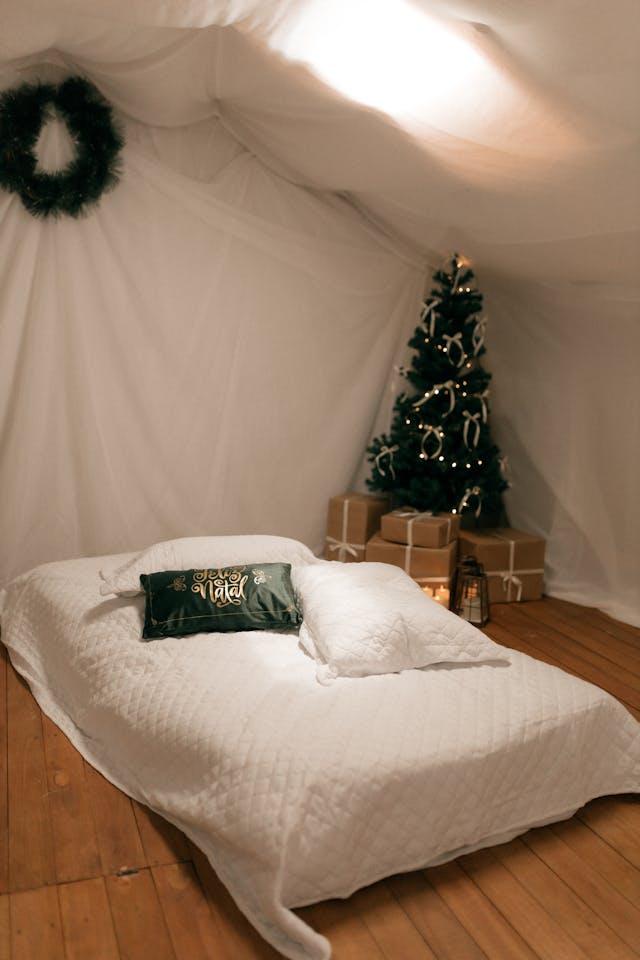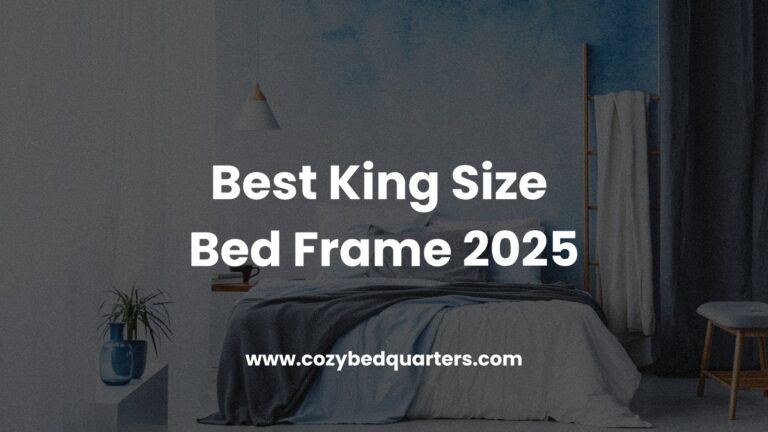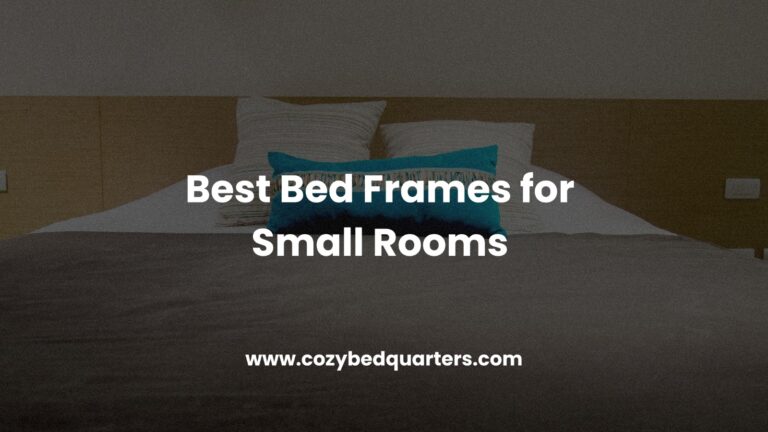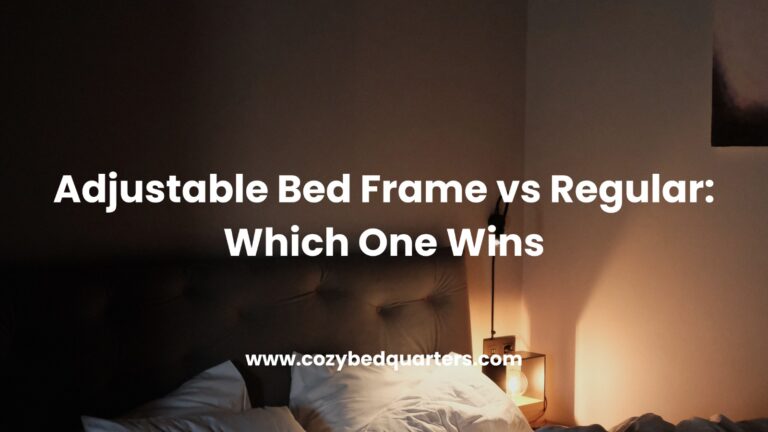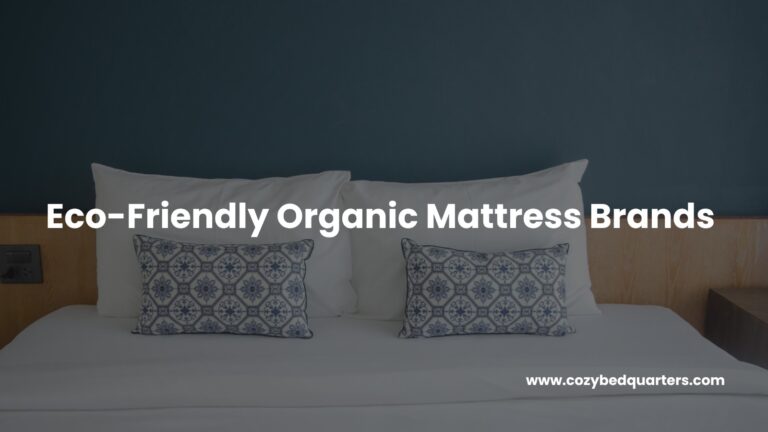Best Bedding Types: Complete Buying Guide for Comfort & Style
The Best Bedding Types include cotton sateen sheets, bamboo and Tencel options, luxury duvets, supportive pillows, and lightweight coverlets. This comprehensive guide explains how to choose bedding materials for optimal comfort, breathability, and durability.
Key Takeaways: Best Bedding Types
- The Best Bedding Types depend more on fabric and weave than inflated thread count claims.
- Natural fibers like cotton, bamboo, and Tencel provide breathability and longevity.
- Duvets, pillows, and coverlets each contribute to overall sleep comfort and layering flexibility.
- Choose pillows based on firmness, fill, and allergy considerations for your sleep style.
- Layer thoughtfully—sheets, duvet, coverlet—for both function and design.
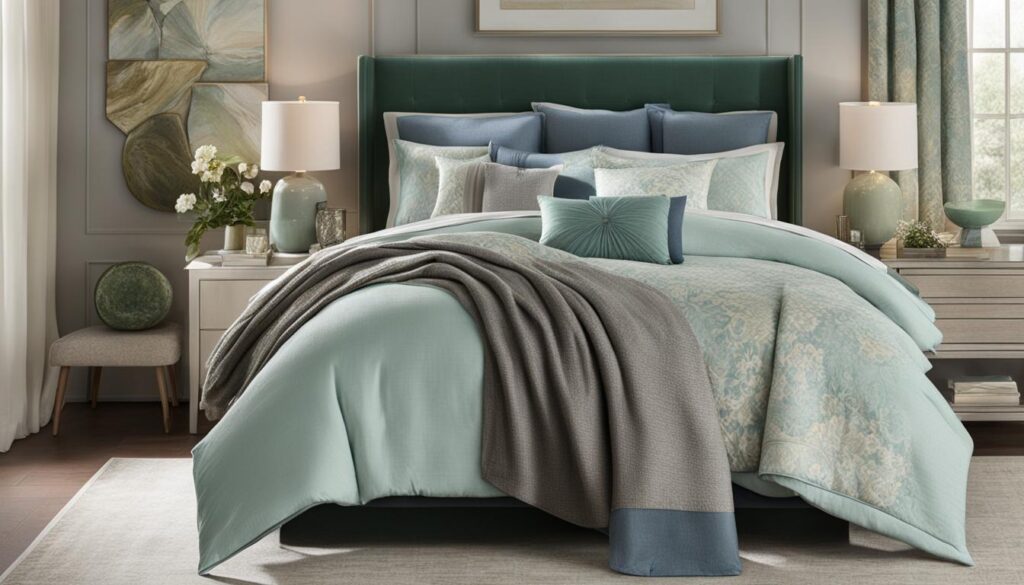
Finding the best sheets and bedding for your needs can transform your sleep quality. Rather than relying on buzzwords like “thread count,” focus on fiber quality, weave, and construction. By understanding the Best Bedding Types—from duvets and pillows to sheets and coverlets—you can create a sleep sanctuary tailored to your preferences.
How to Choose the Best Sheets for Your Home
Start your bedding journey with high-quality sheets. The Best Bedding Types always begin with the foundations of comfort, breathability, and durability. When shopping online, prioritize clear specs over marketing hype.
Sheet Fabric
The sheet fabric you choose directly impacts softness, longevity, and how the material handles temperature and moisture.
- Cotton (especially long- or extra-long staple) is breathable, soft, and durable. See Sleep Foundation’s material guide. :contentReference[oaicite:0]{index=0}
- Egyptian or Pima cotton adds luxury when genuinely sourced from long-staple fibers. :contentReference[oaicite:1]{index=1}
- Bamboo / bamboo-derived viscose is moisture-wicking, silky, and eco-conscious. :contentReference[oaicite:2]{index=2}
- Tencel (lyocell) offers a smooth finish with excellent temperature regulation. :contentReference[oaicite:3]{index=3}
- Linen breathes well and softens over time — especially good in warmer climates. :contentReference[oaicite:4]{index=4}
- Microfiber / synthetics are often lower cost but trade off some breathability. :contentReference[oaicite:5]{index=5}
Thread Count, Ply & Quality
Thread count is often misrepresented—evaluate single-ply yarns, fiber quality, and manufacturer transparency instead. :contentReference[oaicite:6]{index=6}
For cotton or bamboo sheets, a range of 200–600 is often optimal in comfort and airflow. :contentReference[oaicite:7]{index=7}
Avoid multi-ply counting tricks, and favor brands that clearly state fiber origin, weave type, and processing. :contentReference[oaicite:8]{index=8}
Weave & Feel
The weave determines texture, drape, and airflow.
- Percale is crisp and breathable — ideal for warm sleepers. :contentReference[oaicite:9]{index=9}
- Sateen is silky with subtle sheen, though may trap more heat. :contentReference[oaicite:10]{index=10}
- Satin, Twill, Jersey and others provide additional texture and stretch variations.
Choosing the Perfect Duvet
The duvet is your core warmth layer in the bed. In a high-quality bedding setup, it deserves consideration equal to sheets.
See Sleep Foundation’s guide on duvet vs. comforter to compare options. :contentReference[oaicite:11]{index=11}
Duvet Fill Options
The type of fill strongly affects warmth, loft, and allergen exposure.
- Down offers superior insulation and loft, but may not suit allergy-sensitive sleepers.
- Down alternative / synthetic fills are hypoallergenic and easier to wash.
- Hybrid fills combine both types to balance softness and support.
Duvet Cover & Style
A duvet cover protects the insert and adds visual flexibility. Opt for breathable fabrics (cotton, linen), or luxury blends in climates where extra sheen is desired.
Buying the Right Pillows
Pillows are essential in a bedding system—they support your head and neck nightly, so choose carefully.
Pillow Fill & Firmness
- Down pillows are soft and breathable; select higher fill power for loft and support.
- Down alternative / synthetic is allergy-friendly and often firmer.
- Memory foam contours to your shape — good for side sleepers or neck support.
- Hybrid pillows mix foam, fibers, or beads for tailored balance.
What Is a Coverlet & Why It Matters
A coverlet is a lightweight, often decorative layer used over or under the duvet. It adds style and flexibility to your bedding system without overhauling your core duvet or sheets.
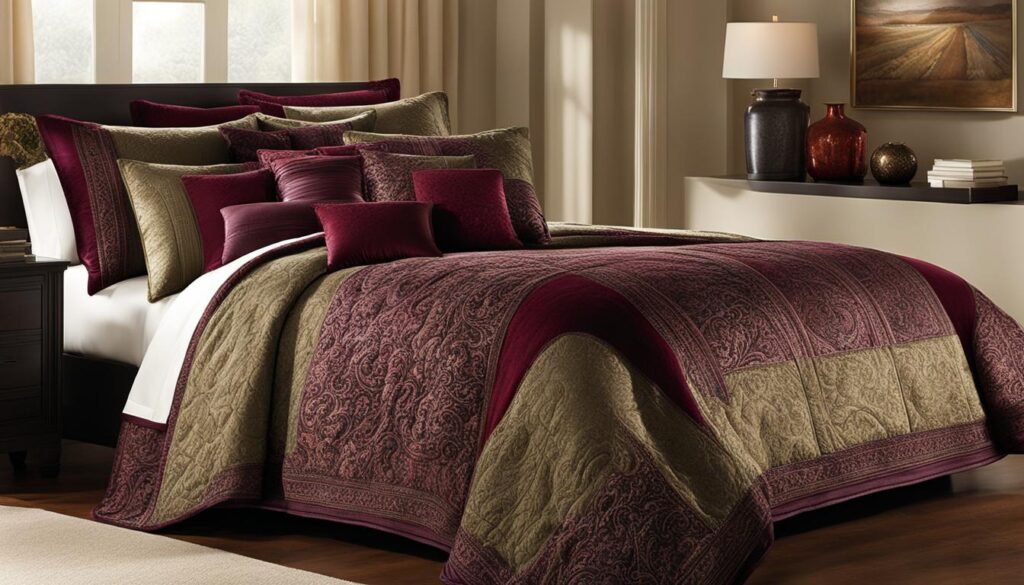
Other Sheet Materials & Niche Options
Beyond the major types, consider:
- Silk sheets — luxurious, cooling, but require delicate care.
- Flannel — brushed cotton for warmth in colder climates.
- Fabric blends — like cotton + bamboo, combining strength and softness.
Microfiber and polyester are durable and budget-friendly, though less breathable. Sleep Foundation compares microfiber vs. cotton performance. :contentReference[oaicite:12]{index=12}
Eco-Friendly vs Conventional Bedding: What to Know
Eco-conscious shoppers weigh environmental impact, certifications, and longevity when selecting bedding types.
- Certifications: Look for GOTS (organic textiles), OEKO-TEX, or other independent labels. :contentReference[oaicite:13]{index=13}
- Fiber sourcing: Bamboo grows quickly; Tencel is processed with closed-loop systems; conventional cotton can require more water and chemicals.
- Longevity: Bedding that lasts a decade offsets its production footprint.
- End-of-life disposal: Natural fibers biodegrade more readily than synthetics.
Trusted Bedding Brands & What to Watch For
Prefer brands that offer transparency — clear material data, supply info, and trials or warranties.
Brands often featured in authority reviews include Boll & Branch, Brooklinen, Saatva, Parachute, and others. Sleep Foundation frequently lists these in its sheet evaluations. :contentReference[oaicite:14]{index=14}
Better Homes & Gardens offers guidance on bedding styling and layering, which complements the technical side of bedding choice. :contentReference[oaicite:15]{index=15}
Putting It All Together: Layering Strategy
Here’s a practical layering approach using the Best Bedding Types:
- Fitted & flat sheet: the breathable base layer.
- Duvet + insert: core warmth, adjustable by season.
- Coverlet / quilt / throw: decorative and extra warmth when needed.
- Pillows & shams: coordinate style and support.
For a visual and methodical layering tutorial, check Better Homes & Gardens’ “How to Make a Bed” guide. :contentReference[oaicite:16]{index=16}
Care, Maintenance & Longevity
Washing Tips
Use cold or gentle cycles, mild detergent, and avoid strong bleach. For down/down-alternative, add tennis balls in the dryer to preserve loft.
Rotation & Storage
Rotate bedding seasonally or quarterly. Store unused sets in breathable cotton bags (not sealed plastic) in a cool, dry space.
When to Replace Bedding
If sheets lose elasticity, pillows flatten, or duvets fail to loft, it’s time for an upgrade. Good-quality bedding can last 5–10 years or more with care.
Conclusion
By combining thoughtfully chosen sheets, a proper duvet, supportive pillows, and optional coverlets, you can define the Best Bedding Types for your bedroom. Prioritize transparency, material quality, and care — and your bedding will reward you with comfort and durability night after night.
FAQ
- How do I choose the best sheets for my home?
- Evaluate fiber quality, weave type, and true single-ply construction rather than chasing high thread count numbers.
- What is the difference between thread count and sheet quality?
- Thread count is just one metric—fiber type, weave, and craftsmanship matter more. :contentReference[oaicite:17]{index=17}
- How do I choose the perfect duvet?
- Balance fill type (down vs alternative) with warmth needs and allergy sensitivity.
- What are the different types of bed pillows?
- Common options: down, synthetic, memory foam, hybrid—each varies in loft, support, and allergen friendliness.
- What is a coverlet and why do I need one?
- A coverlet is a decorative, lightweight overlay used to enhance style and provide flexible warmth layering.
Related Reading
- Best Sheet Materials (Sleep Foundation)
- Best Thread Count for Sheets (Sleep Foundation)
- How to Make a Bed (Better Homes & Gardens)



